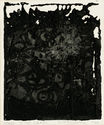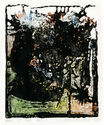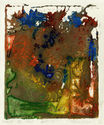
19th, 20th & 21st Century Fine Prints
707-546-7352 · fax 707-546-7924 · web: www.annexgalleries.com · email: artannex@aol.com
Panchal Mansaram Biography
Panchal Mansaram
Canadian
1934–2020
Biography
Painter, printmaker, photographer, and collagist Panchal Mansaram, was born in 1934 in Mount Abu, Rajasthan, India. He attended the Sir J.J. School of Art in Mumbai, India between 1954 and 1959. Upon graduation designed for the Weavers' Service Centre in Kolkata, which was one of many institutions reviving traditional Indian arts that, until the recent Partition of 1947, had been quashed by the British colonial government. He found connection with many Indian artists whose Modernism - unlike most of the contemporary art world - embraced traditional imagery, folk art, and spirituality; among these artists were painter M.F. Husain and filmmaker Satayjit Ray.
Mansaram then studied at the State Academy of Fine Arts, Amsterdam, Netherlands on a Dutch Government Fellowship between 1963 and 1964. During this time he met with members of CoBrA, the Dutch artist collective that embraced folkloric elements in their modernism and worked with layered elements in their two-dimensional work; two ideas that remained with Mansaram throughout his career. He traveled to Paris to learn printmaking at Atelier 17, spending time with countryman Krishna Reddy who taught him the viscosity - or simultaneous color printing - techniques Reddy had helped develop at the famed experimental printmaking workshop.
Around 1965, Mansaram met George Butcher, an Englishman who collected, dealt in, and promoted Indian folk art and Modernism in Delhi. Butcher planned to move to Canada and open a gallery of Indian art and objects, aiming to become a hub for Indian artists in North America. Inspired, Mansaram immigrated to Canada the following year with his wife Tarunika and daughter Mila, hoping to find his footing with the Canadian audience. In Toronto he met philosopher and media theorist Marshall McLuhan - famed for coining the term "the media is the message" - and Canadian art dealer Avrom "Av" Isaacs, both of whom would have profound impacts on his career. He and McLuhan would soon begin collaborating on multi-media projects. In 1967 Mansaram produced ‘East West Intersect’, a multimedia concert held at Av's Isaacs Gallery, which included a five-minute long 16mm film featuring McLuhan. At this time, his two-dimensional work began to take on more collage elements, combining imagery and colors of his birthplace that highlighted his diasporic path.
In the 1970s, Mansaram created a mixed media series of paintings using silkscreen, xerography, and modeling paste, titled “Rear View Mirror” which included a collaborative art work with McLuhan. The series was shown at the Picture Loan Gallery in Toronto in 1974. In 1971/72, the exhibition traveled to seven galleries in the Eastern Provinces of Canada, and then to India at the Dhoomimal Art Gallery in New Delhi and Jehangir Art gallery in Mumbai in 1975. This boosted his interest in collage and he began to incorporate Indian woven and dyed fabrics, photographic blue prints, and more. Ever the experimenter, he transformed a manual credit card machine into a miniature printing press, incorporating tiny printed elements into his works. These were shown at the Taj Art Gallery in Mumbai, India House in New York, and Burlington Art Center, Burlington, in various series titled “Nepal,” “Calcutta by Night,” “Art on the Rocks,” and “Udaipur.”
In the 1980s ,Mansaram did large format laser-graphic works, inspired by his immediate environment. He created works such as “Moving Landscape” and “At the School Lockers,” a laser-graphic installation, and a series of works titled “New York-New York” which were shown at the Piramal gallery in Mumbai, India. He continued to work well into his 80s while living in Ontario, Canada. Panchal Mansaram died on December 6, 2020.




